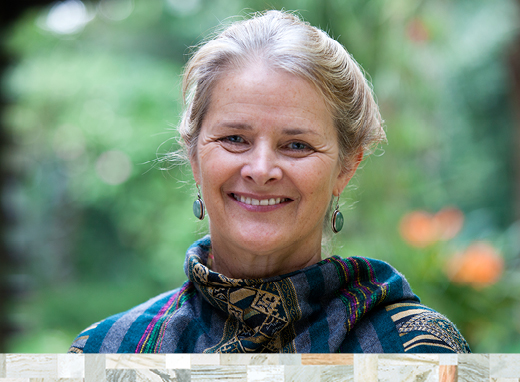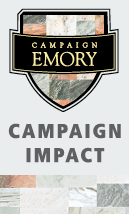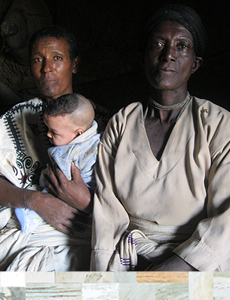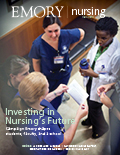Healthy Mothers, Healthy Newborns

Lynn Sibley is building a community base in Ethiopia to improve maternal and newborn survival.
Ethiopia project provides a community model for saving lives
|
Reaching a Milestone: Scholarships: Faculty Research: Service-Learning: |
When the bleeding started without labor, Birhane Simeneh suspected something was wrong. But having been prepared for such a possibility, Simeneh, a 40-year-old mother of six, knew to seek medical care for the complication right away. Her informed decision likely saved her and her baby’s lives.
Simeneh, who lives in rural Amhara, Ethiopia, learned about the dangers of late pregnancy hemorrhage through the Maternal and Newborn Health in Ethiopia Partnership (MaNHEP), a Bill & Melinda Gates Foundation-funded, $8.1 million project at the School of Nursing. To help demonstrate a community-oriented model for improving maternal and newborn survival in Ethiopia, MaNHEP works with pregnant women and frontline health workers to build knowledge and skills in the delivery of a basic package of life-saving maternal and newborn health care during the critical period from birth through the first 48 hours of life.
|
|
In addition to training, MaNHEP supports quality improvement (QI) teams to strengthen those systems needed for maternal and newborn health (MNH) care. They include systems for identifying pregnant women should complications arise and notifying health workers of births in order that care can be delivered in time, every time.
When Simeneh recognized the danger sign of bleeding, she contacted her birth attendant, who already knew that Simeneh was approaching her delivery date through the work of her village’s 14-member QI team. The attendant quickly mobilized neighbors and relatives to transport Simeneh to a local health post where a health extension worker determined that her condition warranted emergency treatment at a nearby hospital. Simeneh later delivered a healthy baby by caesarean section.
In concert with training and quality improvement activities, MaNHEP leads behavior change communications to motivate pregnant women to seek out MNH services and get frontline health workers to provide such services. Through dramas, songs, and poetry contests, MaNHEP also aims to increase teamwork among the health workers so that MNH services can be delivered effectively.
As the different components of MaNHEP coalesce, many more women are expected to have experiences like Simeneh’s. If successful in the Amhara and Oromiya regions, the project could be scaled up throughout Ethiopia beginning in 2013.
“Ethiopia has one of the highest maternal and newborn mortality rates in the world,” says Lynn Sibley PHD RN FACNM FAAN, principal investigator and director of MaNHEP and associate professor of nursing. "We’re confident that our model can help transform the way that women and newborns receive essential care.”—Poul Olson




